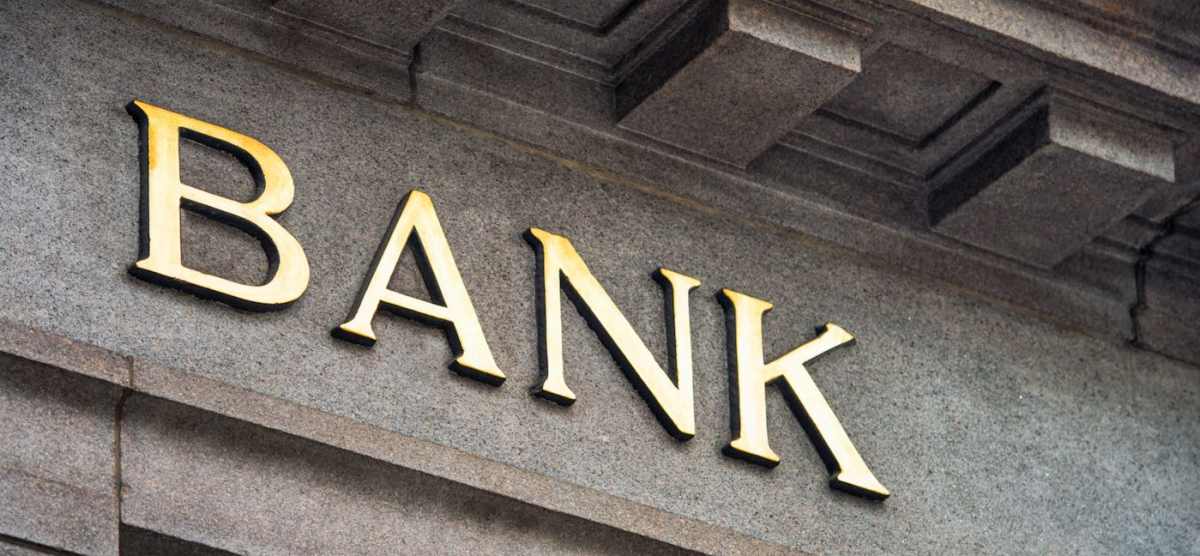零售銀行市場研究

零售銀行業務具有大眾市場吸引力。它也被稱為消費者銀行業務。在這種模式下,大型商業銀行的當地分行設立專門部門來滿足客戶的需求。零售銀行部門旨在成為盡可能多的金融服務的一站式商店。
什麼是零售銀行市場研究?
零售銀行市場研究分析消費者行為、市場趨勢和競爭格局,旨在為利害關係人提供對零售市場的深刻洞察。它深入研究客戶滿意度指標、服務交付效率和新興的金融產品組合,確保銀行積極主動地制定市場策略
為什麼企業需要零售銀行市場研究
零售銀行市場研究有助於風險管理。這項研究提供了對市場趨勢、潛在威脅和機會的見解,使銀行能夠以有效平衡風險和回報的方式定位自己。
它也是產品開發和創新的關鍵。零售銀行市場研究可以清楚了解客戶的需求和偏好,推動超越客戶期望的產品和服務的開發。它的目的是使創新與市場需求保持一致,確保每項新產品都是朝著更大的市場份額和客戶忠誠度邁出的策略一步。
此外,零售銀行市場研究提供了客戶滿意度、忠誠度驅動因素和轉換行為的詳細視圖,使銀行能夠制定有針對性的策略,以提高客戶保留率並吸引新客戶。
零售銀行業務的職能

零售銀行的三個主要職能是:
- 借錢: 零售銀行部門向客戶提供抵押貸款和其他類型的貸款
- 接受存款: 對於那些想要存入儲蓄的人來說,零售銀行部門是一個安全的地方
- 管理資金: 零售銀行業務為客戶提供不同類型的帳戶和卡片。這些工具使他們能夠控制自己的支出
零售銀行業務的特點
零售銀行致力於金融服務產品。這些產品包括支票和儲蓄帳戶、貨幣市場工具以及家庭和商業貸款。此類銀行業務注重消費者的需求。個人帳戶持有人比商業客戶更受關注。零售銀行業務也利用分行內部和外部來推廣和交叉銷售服務。
零售銀行業務的目標
零售銀行調整服務以滿足消費者需求。例如,大多數銀行都是 Zelle 現金應用程式的參與者。該應用程式使消費者只需點擊幾下即可將資金轉移給他們的同伴。這是一種快速、方便的支付方式,深受零售銀行客戶的歡迎。
零售銀行業務也努力滿足客戶的所有銀行業務需求。銀行試圖透過向客戶提供與競爭對手相同的產品和服務來留住客戶。
零售銀行業務的優勢
零售銀行業務的主要優勢是它增加了銀行的業務。它還有助於提高品牌認知度。另一個優點是零售消費者不會威脅銀行的償付能力。零售貸款很少會對銀行的資產負債表帶來壓力。第三個優勢是零售客戶往往有較高的品牌忠誠度。一旦銀行提供優質的客戶服務並且他們的資金安全,他們就不會轉換。相反,他們將繼續成為多年來的忠實客戶。
誰使用零售銀行市場研究

零售銀行市場研究是為金融生態系統內的各種利害關係人提供服務的重要工具。其全面的見解和策略影響遠遠超出了銀行執行董事會的範圍。
金融機構 是零售銀行市場研究的主要受益者。對於這些實體來說,從研究中收集到的見解是為關鍵決策提供資訊的策略資產。從制定企業策略的最高管理階層主管到設計下一個大型金融產品的產品經理,這項研究提供了指導行動和塑造銀行服務未來的知識基礎。
風險管理和合規官員 也發現零售銀行市場研究具有巨大價值。金融部門充滿了從信貸違約到監管違規等各種風險。這項研究提供了市場格局的全景,幫助這些專業人士在風險變成重大威脅之前預測和減輕風險。
此外, 客戶服務部門 利用零售銀行市場研究的洞見來增強客戶體驗。透過了解客戶的需求、痛點和滿意度驅動因素,這些部門可以改善他們的服務交付,確保每次客戶互動既高效又愉快。
最後, 金融科技公司和新創公司 利用這項研究在金融服務領域開拓自己的利基市場。透過了解市場的差距和機遇,這些創新者可以開發解決方案來滿足未滿足的客戶需求,從而顛覆和推動產業發展。
如何進行零售銀行市場研究?

量化研究方法 是零售銀行市場研究的基石。調查和問卷被廣泛用於直接從客戶收集大量數據。對這些數據進行統計分析,以廣泛了解客戶的偏好、行為和趨勢。
另一方面,質性研究方法 增加收集的見解的深度。焦點小組和深度訪談等技術可以幫助我們細緻地了解客戶的態度、動機和感受。這些見解對於理解客戶行為背後的「原因」特別有價值,為定量數據提供了豐富的背景。
市場區隔 是零售銀行市場研究的另一個重要面向。這種方法涉及根據某些標準(例如人口、地理、心理和行為因素)將更廣泛的市場劃分為較小的部分。它允許銀行客製化其產品、服務和行銷工作,以滿足每個細分市場的特定需求,確保更高的相關性和參與度。
競爭對手分析 也是這項研究的組成部分。它涉及評估競爭對手的策略、產品、服務、優勢和劣勢。該分析為銀行提供了市場比較視角,幫助他們發現差異化和策略優勢的機會。
Expected Results from Retail Banking Market Research.
• 全面的市場了解: 零售銀行市場研究提供了市場格局的全景。這包括市場規模、成長趨勢和關鍵驅動因素,全面描繪了當前的市場狀況及其潛在的未來方向。
• 深入的競爭分析: 零售銀行市場研究細緻地剖析了競爭環境。它重點介紹了主要參與者的策略、產品供應和市場定位,深入了解他們的優勢和劣勢。這種競爭情報對於銀行開拓利基市場並在競爭中保持領先至關重要。
• 產品與服務優化: 企業可以期待這項研究能揭示各種銀行產品和服務的有效性和接受度。它確定了當前產品中的差距並確定了創新機會,指導銀行完善其產品組合以更好地滿足客戶需求。
• 監理合規性與影響: 由於銀行業是監管最嚴格的行業之一,這項研究提供了有關監管變化及其對市場潛在影響的見解。了解這些監管動態對於銀行確保合規性並相應調整其策略至關重要。
零售銀行市場研究的當前趨勢

零售銀行市場研究不斷發展。因此,了解這些趨勢對於銀行和金融機構保持競爭力和相關性至關重要。
• 數位轉型: 人們越來越關注了解數位銀行的採用、數位平台上的用戶體驗以及人工智慧和區塊鏈等技術的整合。研究正在深入研究這些技術如何優化營運、增強客戶體驗並開闢新的收入來源。
• 客戶體驗與個人化: 銀行越來越認識到客戶體驗作為關鍵差異化因素的重要性。零售銀行市場研究的重點是了解客戶旅程、痛點和對銀行服務的期望。
• 永續性和社會責任: 人們越來越了解銀行服務對社會和環境的影響。市場研究正在探索客戶對永續銀行實踐的態度,以及銀行如何使其業務與更廣泛的社會和環境目標保持一致。
• 金融科技與顛覆: 金融科技公司的崛起顛覆了傳統銀行模式。零售銀行市場研究正在敏銳地觀察這一趨勢,分析競爭格局,並評估這些新進業者帶來的威脅和機會。
常見問題
零售銀行業務有哪些類型?
零售銀行業務主要有兩種類型。第一個可以在以下位置找到 商業銀行。這些銀行從利差和交易費用中獲利。利差是銀行收取的貸款費用與支付的存款費用之間的差額。另一種類型的零售銀行業務是 信用合作社。這類機構提供與商業銀行相同的服務,但規模較小。
零售銀行業務和商業銀行業務有什麼不同?
人們經常互換使用「零售」和「商業」銀行業這兩個術語。零售銀行業務是指商業銀行內部處理個人客戶的部門。但商業銀行不僅僅服務於個人。他們也為各種規模的企業提供服務。
零售銀行業務和投資銀行業務有什麼不同?
投資銀行透過向公司和政府出售證券來賺錢。這些銀行也為大型企業提供諮詢服務。公司就收購和合併事宜與他們進行協商。摩根士丹利是美國最大的投資銀行之一。另一家主要投資銀行是高盛。相比之下,零售銀行業務為個人提供更普通的金融服務。
為什麼零售銀行市場研究很重要?
零售銀行業確實需要進行市場研究。市場研究幫助銀行發現商機。例如,他們可以與其他銀行合作。他們還可以創造新產品或改進現有產品。如果他們需要擴張,市場研究可以幫助他們找到新的地點。它使他們能夠降低業務風險。它還允許他們創建宣傳材料來銷售他們的產品和服務。
我們在紐約的工廠位置
11 E 22nd Street, Floor 2, 紐約, NY 10010 電話:+1(212) 505-6805
關於 SIS 國際
SIS國際 提供定量、定性和策略研究。我們為決策提供數據、工具、策略、報告和見解。我們也進行訪談、調查、焦點小組和其他市場研究方法和途徑。 聯絡我們 為您的下一個市場研究項目。



